Oakland, California
For over 150 years, Oakland has existed in its power and influence. Flourishing with diversity and culture, Oakland is one of the most socially conscious cities in the world. When an injustice comes about, people in Oakland are out to protest that injustice. It has been home to one of the destinations of the Second Great Migration. The Second Great Migration was a time from 1940 to 1970 where millions of African Americans traveled from the South into the North, the Midwest, and the West Coast (for the purpose of escaping oppressing and seeking better social, economic opportunities). Much of the culture of Oakland resides in its diverse music from Tony Toni Tone, MC Hammer, and Sheila E. Oakland is a West Coast port city found in the East Bay region of the overall Bay Area. It's the third largest city in the San Francisco Bay Area, and it's the 8th most populated city in California. It has over 433,000 people with about 77.89 square miles (with 55 square miles of land). Oakland has been the home of many social movements like the Black Panther Party of Self Defense which was formed in 1966 (by Bobby Seale and Huey Newton). In fact, one time, black people were about 57% of the population of Oakland by 1980. To this day, the Moms 4 Housing is fighting for housing rights. It has been the home of diverse people like C. L. Dellums, Ron Dellums, Jerry Brown, Marcus Goster, Alicia Garza, Kamala Harris, Fred Korematsu, Keyshia Cole, En Vogue, The Pointer Sisters, Clara Elizabeth Chan Lee, and other human beings. The story of Oakland is an American story filled with overcoming challenges, hard work, resisting oppressive systems, and realizing that to have victory is to work together sincerely for real change. If you want change, then action constructively used to promote justice must be enacted thoroughly.
The History of Oakland
The Early Years
In Oakland, California, the first people were the Native Americans from thousands of years ago. The earliest known inhabitants of the area were the Huchiun tribe. New genetic research document how Native Americans are genetic cousins of Siberians as Native Americans came from Siberia. They lived in Oakland since time immemorial. The Huchiun people belonged to a linguistic groups called the Ohlone (a Milwok word meaning "western people"). In Oakland, they lived around Lake Merritt and Temescal Creek, or a stream that enters the San Francisco Bay at Emeryville. Later, there was the Spanish and Mexican period of Oakland's history. Conquistadors from New Spain claimed Oakland, and other Ohlone lands of the East Bay. The conquistadors also conquered the rest of California for the king of Spain in 1772. By the early 19th century, the Spanish crown deeded the East Bay area to Luis Maria Peralta for his Rancho San Antonio. The grant was confirmed by successor Mexican republic upon its independence from Spain. Upon his death in 1842, Peralta divided his land among his 4 sons. Most of Oakland was within the shares given to Antonio Maria and Vicente. The Peralta ranch included a stand of oak trees that stretched from the land that is today Oakland's downtown area to the adjacent part of Alameda, then a peninsula. The peralta called the area encinal or the Spanish word that means, "oak grove." This was translated more loosely as "Oakland" in the subsequent naming of the town (according to Horace Carpenter in his first address as mayor). He said: "The chief ornament and attraction of this city consists, doubtless, in the magnificent grove of evergreen oaks which covers its present site and from which it takes both its former name of 'Encinal' and its present one of 'Oakland.'" The trees were California live oaks which are the dominant oversotyr plant of the coast like oak woodland habitant.
The Treaty of Guadalupe Hidalgo after the Mexican-American War, the Mexican government ceded 525,0000 square miles or 55 percent of its pre-war territory (excluding Texas) to America in exchange for $15 million. The Treaty also gave the safeguarding of the land and property of Mexican citizens. Yet, that provision was regularly ignored by squatters and land speculators. Some of them began settling in the Peralta Ranch during the Gold Rush especially. Before Congress created a Land Commission in 1851 to pursue a settlement of property claims, there were a group of three men. These men were Horace Carpentier, Edson Adams, and Andrew Moon. They were backed at one point by a small army of some 200 men hired from San Francisco to develop a small settlement on Peralta land. It was at first called Contra Costa (opposite shore). It was the Spanish name for the lands on the east side of the Bay in the area that is now downtown Oakland. The United States Post Office recognized this by establishing a post office there with the name "Contra Costa." Carpentier was elected to the California state legislature and go the town of Oakland incorporated on May 4, 1852. By the time of the Land Commission got around to confirming the Peraltas' claims in 1854, Oakland was quickly being further developed. The Peraltas in the meantime had been persuaded to sell various parcels of their vast holdings. In 1853, John Coffee "Jack" Hays, a famous Texas Ranger, was one of the first to establish residence in Oakland while performing his duties as sheriff of San Francisco.
The Early American Period
On March 25, 1854, Oakland was re-incorporated as the City of Oakland. Horace Carpentier was elected its first mayor. His tenure didn't last. He was ousted in 1855. People were angry that he acquired exclusive rights to the waterfront from the Town Board of Trustees in 1852. Charles Campbell replaced him as Mayor on March 5, 1852. The city and its environs grew quickly. There were railroads making Oakland a major rail terminal in the late 1860's and 1870's. In 1868, the Central Pacific made the Oakland Long Wharf at Oakland Point. That is the site of today's Port of Oakland. The Long Wharf served as the terminus both for the Transcontinental Railroad and for local commuter trains of the Central (later, Southern) Pacific. The Central Pacific also established one of its largest rail yards and servicing facilities in West Oakland, which continued to be a major local employer under the Southern Pacific well into the 20th century. The principal depot of the Southern Pacific in Oakland was the 16th Street Station located at 16th and Wood, which is currently being restored as part of a redevelopment project.
In 1871, Cyrus and Susan Mills paid $5,000 for the Young Ladies' Seminary in Benicia, renamed it Mills College, and moved it to its current location in Oakland, adjacent to what is now Seminary Boulevard. In 1872, the town of Brooklyn was incorporated into Oakland. Brooklyn, a large municipality southeast of Lake Merritt, was part of what was then called the Brooklyn Township.
A number of horse-car and cable car lines were constructed in Oakland during the latter half of the 19th century. The first electric streetcar set out from Oakland to Berkeley in 1891, and other lines were converted and added over the course of the 1890's. The various streetcar companies operating in Oakland were acquired by Francis "Borax" Smith and consolidated into what eventually became known as the Key System, the predecessor of today's publicly owned AC Transit. In addition to its system of streetcars in the East Bay, the Key System also operated commuter trains to its own pier and ferry boats to San Francisco, in competition with the Southern Pacific. Upon completion of the Bay Bridge, both companies ran their commuter trains on the south side of the lower deck, directly to San Francisco. The Key System in its earliest years was actually in part a real estate venture, with the transit part serving to help open up new tracts for buyers. The Key System's investors (incorporated as the "Realty Syndicate") also established two large hotels in Oakland, one of which survives as the Claremont Resort. The other, which burned down in the early 1930's, was the Key Route Inn, at what is now West Grand and Broadway. From 1904 to 1929, the Realty Syndicate also operated a major amusement park in north Oakland called Idora Park.
World War II
By the early 1900's, there was a plague epidemic. That is why authorities used quarantines measures at Oakland ports to save lives. Some rats were infected. Over 5,000 people were quarantined in 1908. Hunters came into to shoot the squirrels. The State Board of Health of the U.S. Public Health Service only allotted about $60,000 a year to end the disease. Oakland didn't have sufficient health facilities back then. Some of the infected human beings were treated at home. The pnuemoic plague killed a dozen people in Oakland in 1919. The situation started when a man went hunting in Contra Costa Valley and killed a squirrel. After eating the squirrel, the man fell ill. 4 days later, another household member had the plague. This led to others having it. Officials acted quickly by issuing death certificates to monitor the spread of the plague. Oakland grew in size. It started to annex farmland and settlements to the east and north. Industries grew in the city. Alameda was made an island. By 1906, the city's population doubled with migrants made homeless after the 1906 San Francisco earthquake and fire. The Rotary Club of Oakland was created in 1908. By 1916, General Motors opened an automobile factory in East Oakland called the Oakland Assembly. The location produced Chevrolet cars and then GMC trucks until 1963. Then, it moved to Fremont in southern Alameda County. By 1916, the Fageol Motor Company chose East Oakland for their first factory, manufacturing farming tractors from 1918 to 1923. By 1920, Oakland was the home of numerous manufacturing industries, including metals, canneries, bakeries, internal combustion engines, automobiles, and shipbuilding. By 1929, when Chrysler expanded with a new plant there, Oakland had become known as the "Detroit of the West," referring to the major auto manufacturing center in Michigan.
Oakland's population in the 1920's further expanded with factory workers. About 13,000 homes were built in the 3 years between 1921 and 1924. That was more than during the 13 years between 1907 and 1920. Many of the large downtown office buildings, apartment buildings, and single family houses still exist in Oakland like they did in the 1920's. Russell Clifford Durant formed the Durant Field at 82 Avenue and East 14th Street in 1916. The first transcontinental airmail flight finished its journey at Durant Field on August 9, 1920, flown by Army Capt. Eddie Rickenbacker and Navy Lt. Bert Acosta. Durant Field was often called Oakland Airport, though the current Oakland International Airport was soon established four miles (6.4 km) to the southwest.
During World War II, the East Bay Area was home to many war-related industries. Oakland's Moore Dry Dock Company expanded its shipbuilding capabilities and built over 100 ships. Valued at $100 million in 1943, Oakland's canning industry was its second-most-valuable war contribution after shipbuilding. The largest canneries were in the Fruitvale District, and included the Josiah Lusk Canning Company, the Oakland Preserving Company (which started the Del Monte brand), and the California Packing Company
President Franklin D. Roosevelt called on defense industries with government contracts to integrate their workforces and provide opportunities for all Americans. Tens of thousands of laborers came from around the country, especially poor whites and blacks from the Deep South: Alabama, Arkansas, Georgia, Louisiana, Mississippi, South Carolina, and Texas, as well as Missouri and Tennessee. Henry J. Kaiser's representatives recruited sharecroppers and tenant farmers from rural areas to work in his shipyards. African Americans part of the Great Migration (in about 5 million people) left the South to the West and all over America from 1940 to 1970. White migrants from the Jim Crow South carried their racial attitudes, causing tension to rise among black and white workers competing for the better paying jobs in the Bay Ara. The racial harmony that many Oakland black people have been accustomed to prior to the war ended. Many Mexican Americans migrated to the area from New Mexico, Texas, and Colorado. Many worked for the Southern Pacific Railroad, as its major rail yard in West Oakland. Their young men encountered hostility and discrimination by Armed Forces personnel, and tensions broke out in "zoot suit riots" in downtown Oakland in 1943 in the wake of a major disturbance in Los Angeles that year. In 1946, National City Lines (NCL), a General Motors holding company, acquired 64% of Key System stock. This was during the next several years NCL engaged in the conspiratorial dissolution of Oakland's electric streetcar system. The city's expensive streetcar fleet was converted to the cheaper diesel buses. The state Legislature formed the Alameda and Contra Costa Transit District in 1955, which operates today as AC Transit, the third-largest bus-only transit system in the nation. Soon after the war, as Oakland's shipbuilding industry declined and the automobile industry went through restructuring, many jobs were lost. Economic competition increased racial tension. In addition, labor unrest increased as workers struggled to protect their livelihoods. Oakland was the center of a general strike during the first week of December 1946, one of six cities across the country that had such a strike after World War II.
The Civil Rights Movement of Oakland, California.
There is a long history of the Civil Rights Movement in Oakland and in the Bay Area in general. After World War II, the Great Migration caused a lot of Black Americans to go into the Bay Area from the South. Activists wanted an end to oppression in general. In the West Coast, people fought for equality, fairness in education, housing rights, and employment opportunities. Many people in California supported the Civil Rights Movement of the South too. This movement included people of all colors and backgrounds. In Oakland, demonstrations, sit-ins, marches, pickets, and parades were commonplace back then. The evil 1882 Chinese Exclusion Act banned Chinese people from immigrating to America based upon race. The law was only repealed decades after it was passed. By the 1940's and the 1950's, the federal housing redlining policies banned communities of color from developing their own wealth. Neighborhoods suffered. There was the white flight to the suburbs. Many Oakland homes and businesses were destroyed to build the Nimitz Freeway and the Cypress Viaduct. Urban renewal was at West Oakland by the 1960's. Many black and Latino families were displaced from West Oakland during htis time. The BART and the Main Post Office at 1675 7th Street was built. Many black Americans moved into East Oakland and at Elmhurst district. Latinos moved into the Fruitvale neighborhood. People of Oakland fought back. After the Woolworth sit-in in Greensboro, North Carolina, many people in the Bay Area boycotted Woolworths. Terry Francois, the President of the San Francisco branch of the NAACP and the college student Thomas Gaither supported equality. 2,500 people marched along Post Street San Francisco to protest the tragedy of 4 little young African American girls being murdered by a bomb at the 16th Street Baptist Church at Birmingham, Labama (in 1963).
The protest had Rabbi Alvin Fine, Chairman William Chester of the International Longshore and Warehouse Union (ILWU), U.S. attorney Cecil Poole, and Leonard Farmer speak their minds. 40,000 people marched along Market Street to protest the nomination of Senator Barry Goldwater as the Republican Presidential nominee because of his views of civil rights (Goldwater opposed the 1964 Civil Rights Act, because he didn't want the federal government to eliminate Jim Crow apartheid. He only wanted states separately to eliminate racial discrimination). The U.C. Berkeley Chapter of Congress of Racial Equality (CORE) used sit-ins and protests too. Many in the Bay Area fought for Fair Housing rights too. In May of 1964, Dr. Martin Luther King Jr. visited the Bay Area to have a rally to fight for the civil rights bill in America. By 1967, the California Supreme Court eliminating a housing law that discriminated against black people. By the 1960's, community groups like Oakland Community Organizations, Unity Council, Intertribal Friendship House, the Black Panthers and other groups fought for racial justice, equal access to jobs, housing transportation, health care, etc. By the 1980's and 1990's, community group fought institutionalized racism. There was the PolicyLink, the Green Lining Institute, and the Center for Racial Justice Innovation. During the 21st century, civil rights groups flourish in Oakland. Oakland had a long history of protest. There was a black mutiny after an explosion killed over 200 African American sailors during World War II. Biranna Noble rode her horse to protest the police killing of George Floyd.
Oakland was always a place where protests involving military desegregation, civil rights, economic justice, etc. existed. The Port Chicago Mutiny of 1944 was over the explosion at the Port Chicago at July 17, 1944. A tons of munitions blew up.Racists didn't even want just compensation to the families of the black sailors. Many of the 50 black seamen who mutinied were sentenced to prison. They were only exonerated in 2019. There was the Oakland General strike in 1946. It opposed discrimination. By 1960, 83,000 African Americans were in Oakland out of 368,000 people. There was the civil rights protest at the Oakland Tribune in 1964. The protest wanted fair hiring practices without racism. The Black Panthers was a group who wanted proletariat revolution, and they were formed at Oakland on October of 1966. They were socialists who desired the black people to be protected from police brutality. They used programs of helping children, adults, etc. in order to be the catalyst to eliminate global imperialism. They opposed the Vietnam War. The Black Panthers had a breakfast program to feed children, establish medical clinics, form transportation services, and create a nationwide newspaper sending out important messages of the day to the people. They studied revolutionary scholars. The Black Panthers used a grassroots movement in desiring change. They were in the California legislature at Sacramento, California to protest the Mulford bill as the Black Panthers openly carried rifles (which was legal at the time). This happened on May 2, 1967 after the Richmond police killed unarmed black man Denzil Dowell. The protest at Sacramento represented the Black Panthers' activism. Many stories of the Black Panthers have shown their heroism, courage, and a sense of love for the black community. From Fred Hampton to Terika Lewis, the Panthers constituted tons of intellectual power including social consciousness. They were the progressive side of the overall black freedom struggle.
In 2009, tons of people protested the unjust killing of Oscar Grant. The cop, who killed him, received a slap on the risk. Oscar Grant was a working class, young black man who just wanted to provide for his family. The 1980's saw high unemployment and crime in Oakland. Oscar Grant was only 22 years old when he passed on New Year's Day 2009. The killer is Johannes Mehserle. Oscar Grant was shot at Fruitvale Station. Oakland had the Occupy movement to promote economic justice in the midst of Wall Street financial issues. The Oakland rebellion took place in 2014 over the death of Michael Brown. Oakland protests continued in 2020 after the passing of George Floyd and Breonna Tyalor. There were legitimate protests and vandalism. Many of the old school activist who fought for justice and back then are Walter Riley (an Oakland attorney), Ned Saturu (a former Black Panther Party people, activist, and entrepreneur), Steve McCutchen (who is an activist and a former member of the Black Panther Party), Dr. Ayodele Nzinga (who is a theater director, author, and founder of the Black Arts Movement Business District), Cat Brooks (a fighter against police terror), and other unsung heroes. The struggle for justice continues.
The Post World War II Era
After WWII, massive changes happened in Oakland. In 1960, the Kaiser Corporation created its new headquarters. It was the largest skyscrapers in Oakland and was the largest office tower back then west of Chicago. By this time, suburban developed increased around Oakland. Wealthier residents moved into new housing. Despite the major increases in the number and proportion of African Americans in the city. In 1966, only 16 of the city's 661 police officers were black. Tensions between the black community and the largely white police force were high, as expectations during the civil rights era increased to gain social justice and equality before the law. Police abuse of blacks was common. Students Huey Newton and Bobby Seale founded the Black Panther Party at Merritt College (then located at a former high school on Grove Street, now occupied by Children's Hospital Oakland Research Institute), which emphasized black power, advocated armed self-defense against police brutality, and was involved in several incidents that ended in the deaths of police officers and other Black Panther members. Among their social programs were feeding children and providing other services to the needy. During the 1970's, Oakland began to suffer serious violence and other problems related to gang-controlled dealing of heroin and cocaine when drug kingpin Felix Mitchell created the nation's first large-scale operation of this kind. Both violent crime and property crime increased during this period, and Oakland's murder rate rose to over twice that of San Francisco and New York.
The 1980's and the 1990's
Many other American cities during the 1980's had the crack cocaine epidemic. It was a serious problem in Oakland too. Back then, no one issued programs to help with families or drug addiction in a massive level. People were placed into prison, people were scapegoated, and no radical changes happened to save families. Crime rates grown. By 1980, Oakland's black population had its 20th century peak at 47% of the overall city population.
The 6.9 M Loma Prieta earthquake happened on October 17, 1989. The rupture was related to the San Andreas fault system and affected the entire San Francisco Bay Area with a maximum Mercalli intensity of IX (Violent). Many structures in Oakland were badly damaged including the double-decker portion of Interstate 880 that collapsed. The eastern span of the San Francisco–Oakland Bay Bridge also sustained damage and was closed to traffic for one month. On October 20, 1991, a massive firestorm swept down from the Berkeley/Oakland hills above the Caldecott Tunnel. Twenty-five people were killed, 150 people were injured, and nearly 4,000 homes destroyed. With the loss of life and an estimated economic loss of US$1.5 billion, this was the worst urban firestorm in American history, until 2017. During the mid-1990s, Oakland's economy began to recover as it transitioned to new types of jobs. In addition, the city participated in large development and urban renewal projects, concentrated especially in the downtown area, at the Port of Oakland, and at the Oakland International Airport.
The 2000s
After the 1999 inauguration of Oakland Mayor Jerry Brown, he continued with his predecessor Elihu Harris' public policy of supporting downtown housing development in the Central Business District via the Oakland 1998 General Plan. This Central Business District is located at Downtown Oakland. Since Brown's stated goal was to add 10,000 residents to downtown Oakland, it became known as the "10K" plan. It resulted in redevelopment projects in the Jack London District, where Brown purchased and later sold an industrial warehouse, which he used as a personal residence, and in the Lakeside Apartments District near Lake Merritt, where two infill projects were approved. The 10K plan touched the historic Old Oakland district, the Chinatown district, the Uptown district, and downtown. Obviously, the 10K plan and other redevelopment plans were controversial, because of the possible rent increases and gentrification. Gentrification would displace lower income residents from downtown Oakland into other neighborhoods and cities. Another controversy over the development proposals developed when there was the weakening of the Bay Area and the national economy in 2000, 2001, 2007, and the credit crunch and the recession of 2008. These downturns resulted in lowered sales, rentals and occupancy of the new housing and slower growth and economic recovery than expected.
The Oakland Athletics have long sought a site to build a new baseball stadium. A deal announced in 2006 to build a new park in Fremont, to be called Cisco Field was halted three years later as a result of opposition from businesses and local residents. Local efforts have been put forth by both fans and city politicians to retain the A's, including three potential locations near downtown and the Oakland waterfront.The South Bay city of San Jose showed continuing, strong interest in becoming the team's new home, and was the preferred destination for then majority team owner Lew Wolff,but was blocked by the San Francisco Giants. Currently plans call for a 34,000 seat new stadium dubbed Oakland Ballpark at Howard Terminal (owned by the Port of Oakland) next to Jack London Square. The Oakland Ballet, performing in the city since 1965, folded temporarily in 2006 due to financial problems and the closure of their performance facility, the Calvin Simmons Theater at the Kaiser Convention Center. The following year, founder Ronn Guidi announced the revival of the Ballet under new director Graham Lustig, and the program continues to perform at the Laney College Theater.
Early morning January 1, 2009 changed Oakland, California forever. This was when the unarmed civilian black man named Oscar Grant was shot and killed by the BART police officer Johannes Mehserle on a crowded platform at the Fruitville BART Station in East Oakland. Officers had subdued and handcuffed Grant in a prone position for allegedly resisting arrest before Mehserle shot Grant in the back with his gun. Mehserle thought his gun was a stun gun. Later, demonstrations and rebellions took place in Downtown Oakland, with demonstrations opposing police brutality and racial injustice. Mehserle was convicted of involuntary manslaughter in July 2010, and sentenced to 2 years in prison. Both the verdict and sentencing set off further demonstrations in downtown Oakland which included looting and destruction of property. In February 2009, the Fox Oakland Theater reopened. The theater had been closed for most of the previous 42 years, with few events held there. After a thorough restoration, seismic retrofit, and many other improvements following years of severe neglect (including a fire as recently as 2004), the historic landmark theater started drawing patrons from all over the Bay Area. On March 21, 2009, Oakland parolee Lovelle Mixon, 26, fatally shot four Oakland police officers, and wounded a fifth officer. At approximately 1:00 p.m., Mixon shot and killed two officers during a routine traffic stop. Mixon fled the scene, hiding in his sister's nearby apartment, and shortly after 3:00 p.m., he killed two more officers as they responded. During the ensuing shootout, the police killed Mixon in self-defense and a fifth officer was wounded. Three of the officers killed were ranking sergeants, the first time the Oakland Police Department had lost a sergeant in the line of duty. It was the single deadliest day for sworn personnel in the department's history, and also the deadliest attack on U.S. law enforcement since the September 11 attacks.
The 2010's and the 2020s
Due to misconduct by the Oakland Police Department, the City of Oakland has paid a total of $57 million during the 2001–2011 time frame to victims of police abuse—the largest sum of any city in California. On October 10, 2011, protesters and civic activists began Occupy Oakland. They protested national social and economic inequality at Frank Ogawa Plaza in Downtown Oakland. The demonstrators set up an encampment that one point, consisted of a "miniature city" of as many as 150 tents. A 2nd encampment was formed at Snow Park on Lake Merrritt. Oakland Police raided and dismantled the 2 protest sites at Frank Ogawa Plaza and Snow Park early in the morning on October 25. Later the same day, in efforts to reestablish the encampments, protesters clashed with police. Two officers and three protesters were injured and more than a hundred people were arrested. On November 2, thousands marched upon and shut down the Port of Oakland. At least two Iraqi war veterans were injured in the demonstrations, by police action. By November 14, the encampment at the plaza in front of City Hall had been cleared, and it was announced by city officials the continued protests had cost the city $2.4 million. A January 28, 2012 attempt by Occupy Oakland protesters to overtake the vacant Henry J. Kaiser Convention Center resulted in hundreds of arrests by police, and that evening a break-in by vandals to Oakland City Hall resulted in damage to artwork and the building itself. Throughout the 2010s, the city's Oakland Medical Center, the first HMO and first Kaiser Permanente hospital, underwent a $2 billion retrofit including numerous new buildings.
On April 2, 2012, seven people were killed in a shooting at Oikos University, located in East Oakland near the airport and Coliseum Complex. Suspect One L. Goh surrendered an hour later to police in Alameda. The shooting was considered the deadliest mass killing in the city's history. In July 2013, after the acquittal of George Zimmerman in the Trayvon Martin Trials, there were protests. A small group of the protesters were organized in cities including San Francisco, Philadelphia, Chicago, Washington, D.C., and Atlanta. On December 2, 2016, a fire at a Fruitvale District warehouse, which was hosting a music event, killed at least 36 people. It was the deadliest fire in the city's history. Oakland teachers went on strike in February 2019. In 2020, protests in Oakland fought injustice involving the deaths of Breonna Taylor, George Floyd, etc. In 2021, the struggle continues, but our cause for human liberation is just.
The Culture of Oakland
There is always a diverse culture in Oakland, California. Back in 2018, 35.0.6% of the people in Oakland are white, 23.18% are African Americans, 0.87% are Native Americans, 15.32 percent are Asian Americans, and 226.5 percent are Hispanic Americans. Oakland is one of the most ethnically diverse major cities in America. That is why a 2019 analysis by WalletHub showed that Oakland was the most ethnocracially diverse city in the United States of America. Oakland became a destination for African Americans in the Great Migration during and after World War II as they gained high-paying jobs in the defense industry. With gentrification and raising housing prices, many black people have relocated to other housing in the Bay Area suburbs or moving to the Southern United States via the Reverse Great Migration. There are many immigrants in the city too. Oakland is known for having a large art scene. Tons of art communities are found in Downtown, Chinatown, Old Oakland, and Jack London Square. The city is a renowned culinary hotbed, offering both a wide variety and innovative approaches to diverse cuisines in restaurants and markets, often featuring locally grown produce and international styles such as French, Italian, Portuguese/Spanish, Ethiopian, Asian, Latin American, as well as Caribbean, Southern United States/Louisiana Creole, etc., all of which reflects the culinary traditions of the city's ethnically diverse population. Historically a focal point of the West Coast blues and jazz scenes, Oakland is also home to musicians representing such genres as rhythm and blues, gospel, funk, punk, heavy metal, Rap/Gangsta rap, and hip hop. There is the African American Museum and Library at Oakland, California. The National Register of Historic Places have Fox Oakland Theater (opening in 1928) was a historic landmark.
The Legacy of Oakland
Oakland, California has been a city filled with a long history and outstanding culture. It is a city with over 430,000 people. For long decades, Oakland has been a city of activism. During the Civil Rights Movement, supporters of ending Jim Crow apartheid and those who disagreed with the Vietnam War were in full force to stand up for justice. The Black Panther Party for Self-Defense with its 10 Point Program was founded in the city of Oakland by Bobby Seale and Huey P. Newton. The Black Panthers courageously stoop up against police terrorism. They promoted community-based programs to help feed children breakfast, send transportation for people, and organized rallies to support revolutionaries. The Black Panthers created health clinics to give medicine to the sick and other human beings who desired assistance on their human needs. Today, Oakland has changed in many ways. Yet, the concept of diversity and human tolerance are all part of the ethos of the inspiring legacy of the city of Oakland, California. Libby Schaaf is the mayor of Oakland now. Congresswoman Barbara Lee (who is a lifelong progressive) represents Oakland from the United States House of Representatives. Tons of people travel to Oakland for business, tourism, and other reasons. It has a huge arts culture. African American culture, Asian culture, Latino culture, and other cultures are celebrated all over the city. The city is home to United States Vice President Kamala Harris, Fred Koresmatsu, one founder of BLM Alicia Garza, C. L. Dellums, Jerry Brown, Keyshia Cole, En Vogue, MC Hammer, Goapele, The Pointer Sister, Perri Reid, Raphael Saadiq, and other human beings who have changed history forever. Oakland is America filled with the dreams of a justice amidst a multicultural country. America is the most diverse nation culturally in human history, and that diversity ultimately represents our strength.
By Timothy


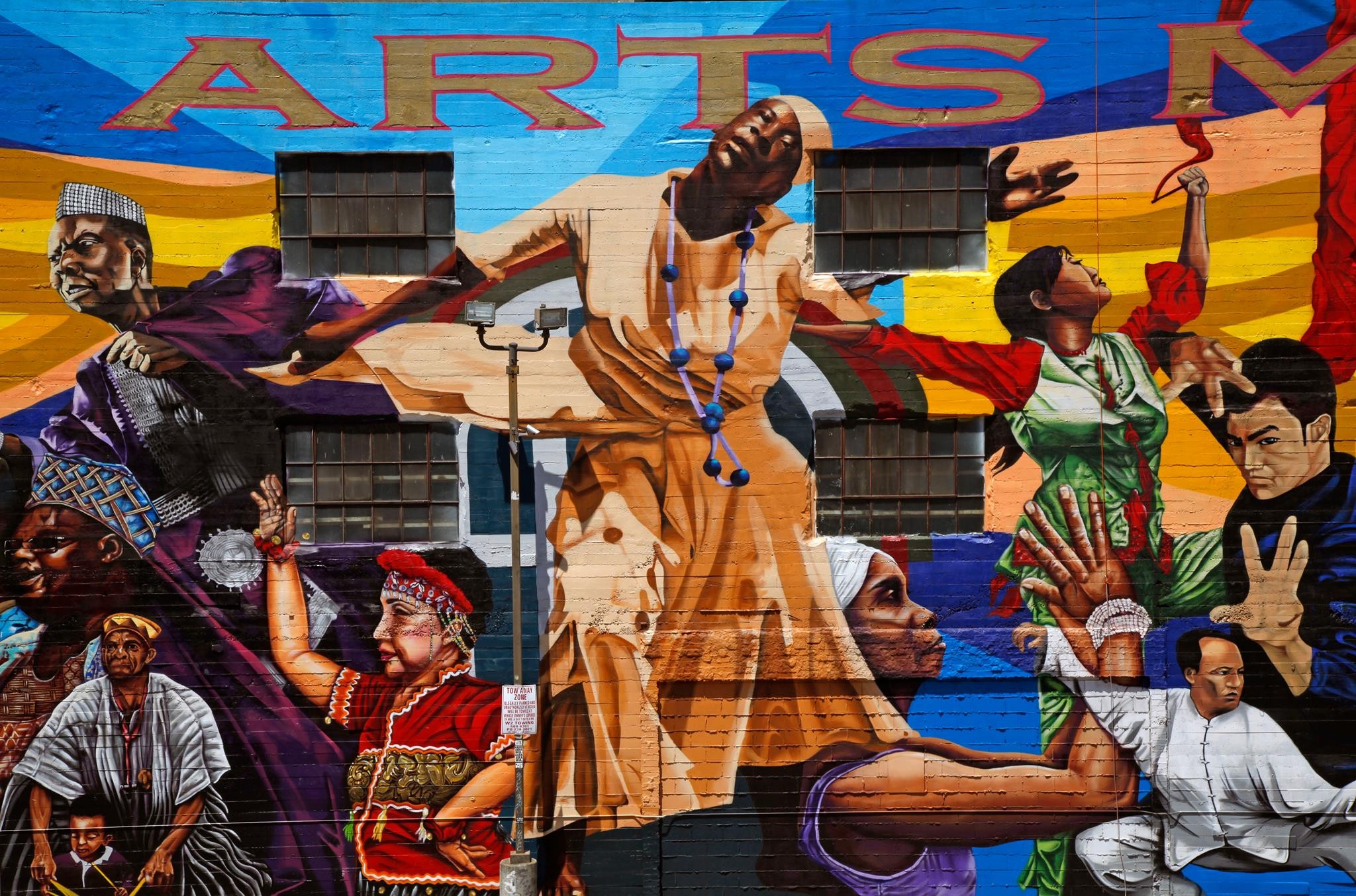

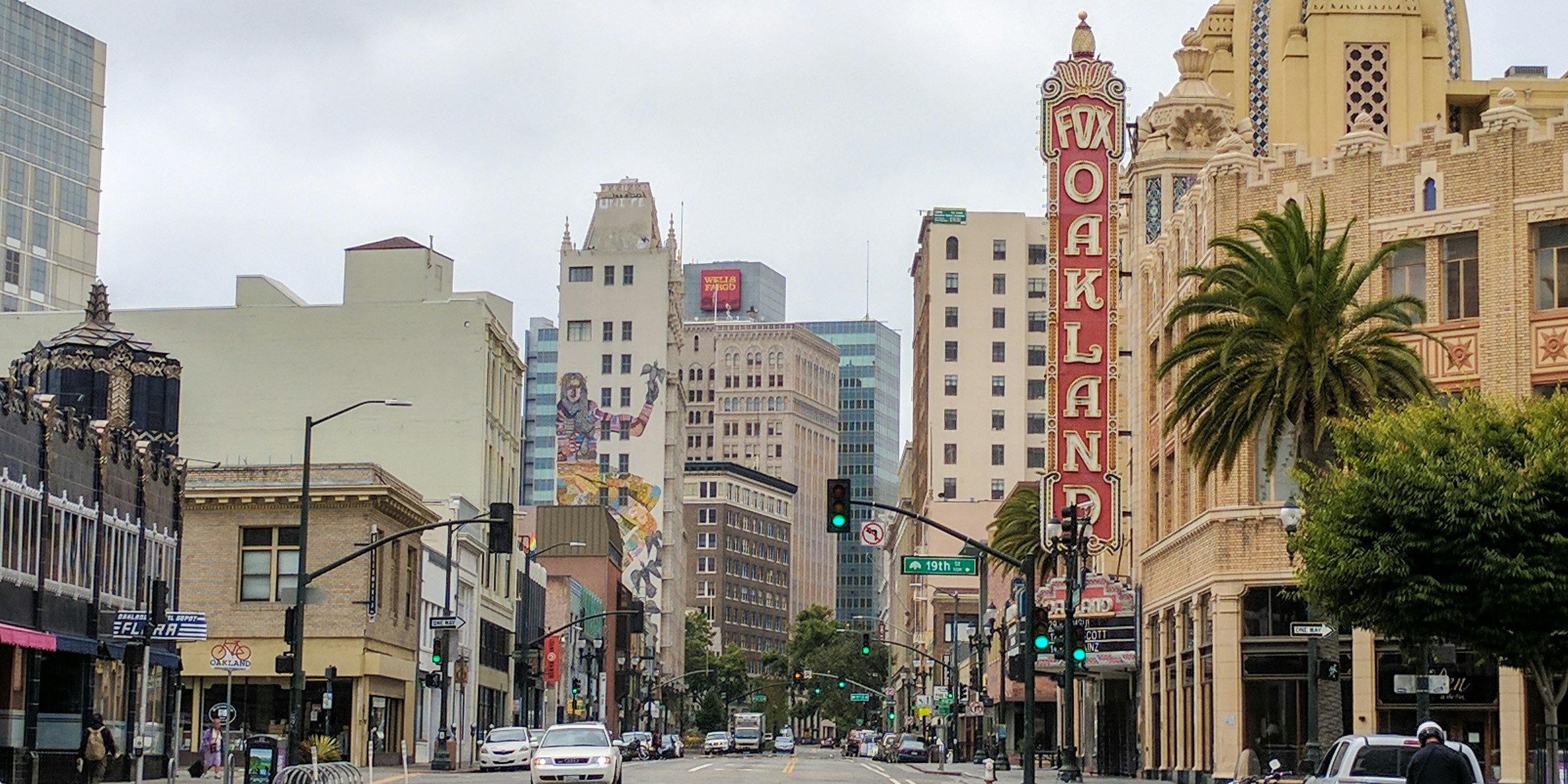

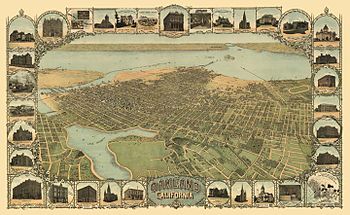










.jpg)


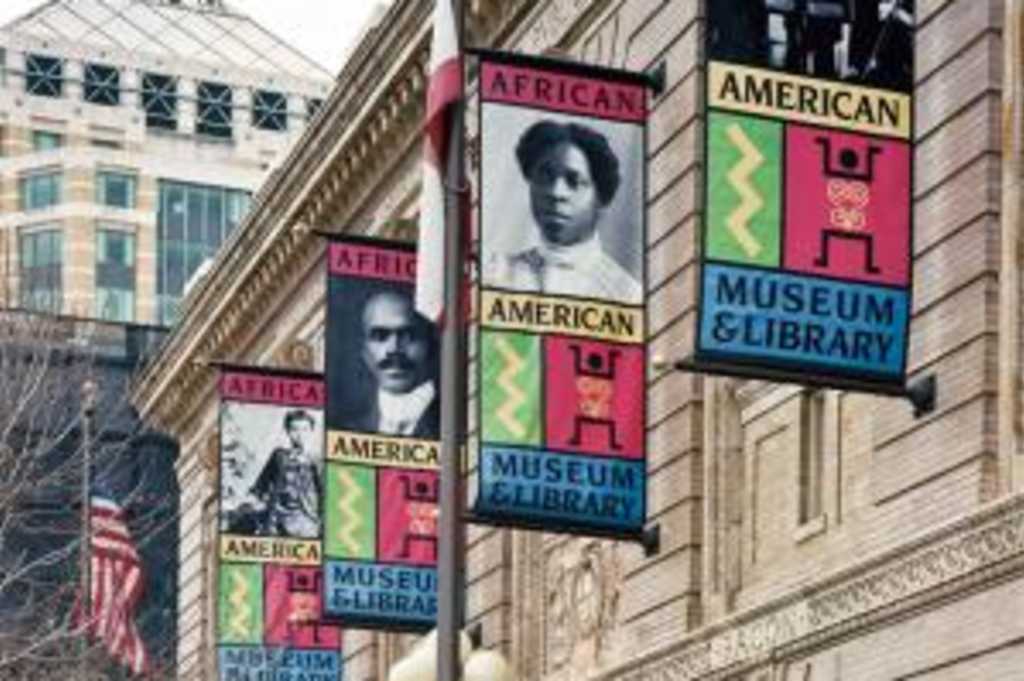
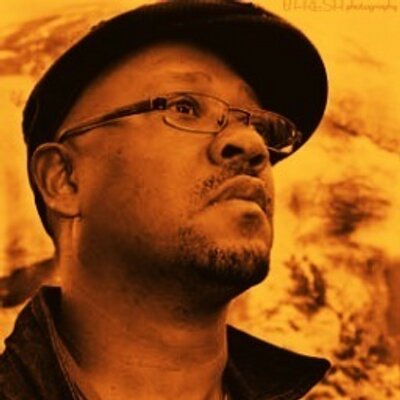
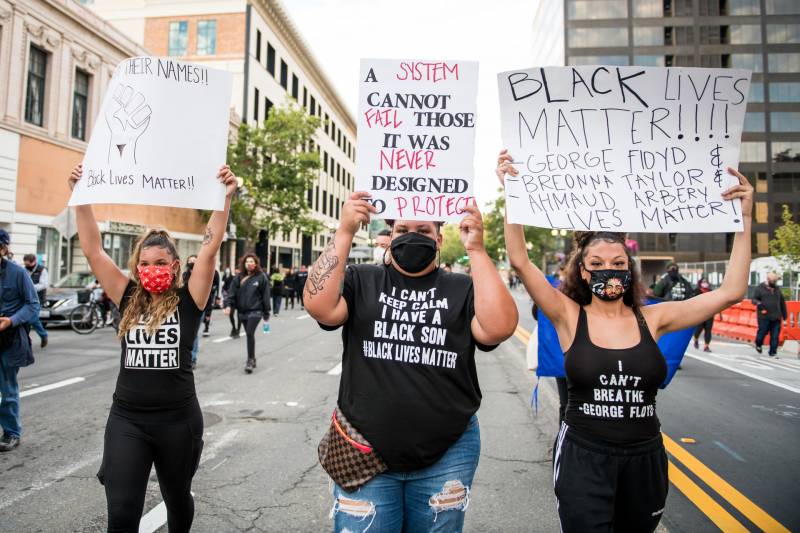
No comments:
Post a Comment